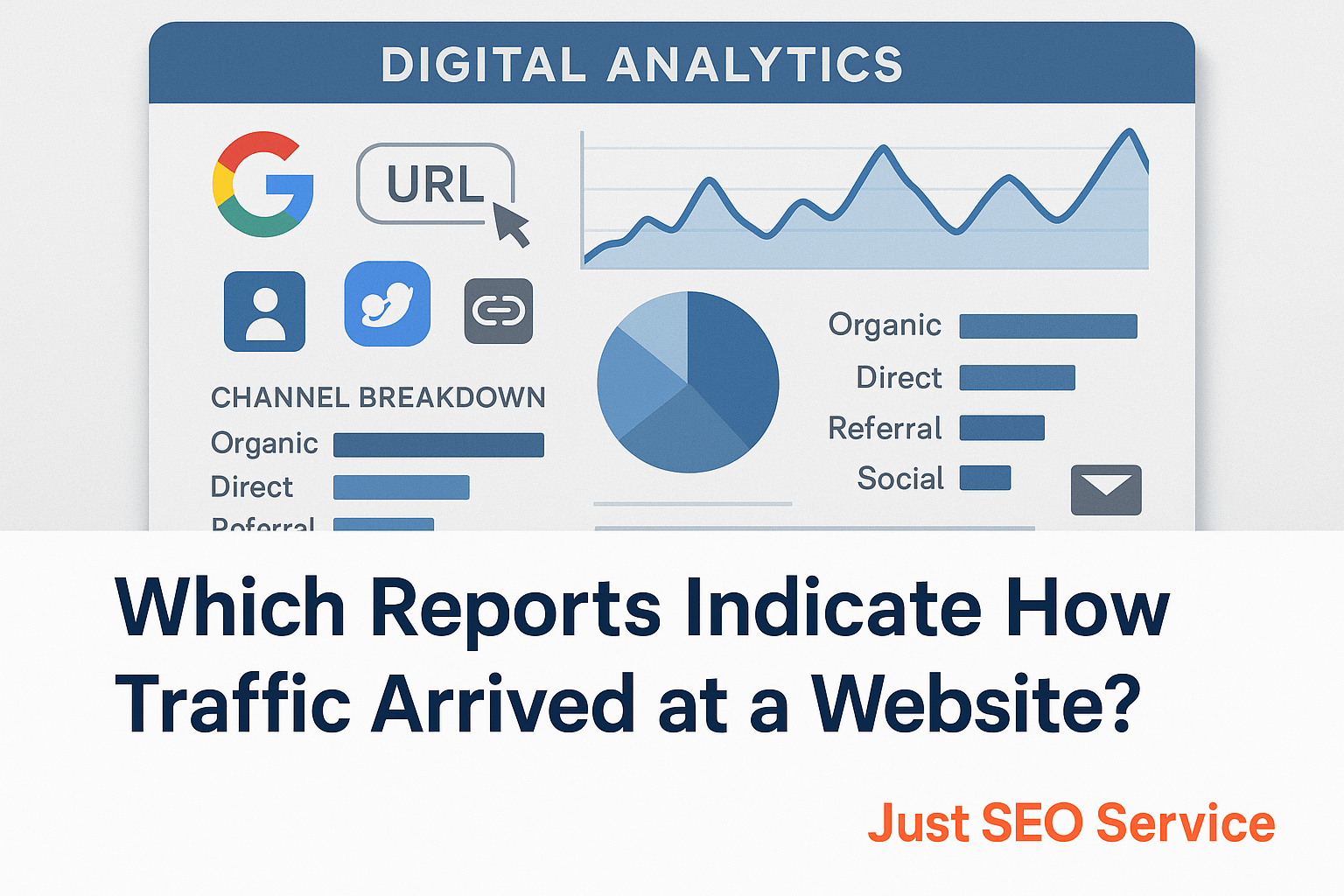5 Essential Traffic Source Reports Every Website Owner Should Know
Understanding where your website visitors come from is crucial for making smart
marketing decisions. Traffic source reports reveal which channels bring the most valuable visitors to your site, helping you optimize your marketing budget and improve your overall digital strategy.
Every website analytics platform provides traffic source data, but knowing which reports to focus on can make the difference between guessing and knowing what actually works. The right reports help you identify successful marketing channels, spot emerging opportunities, and eliminate wasteful spending on underperforming campaigns.
This guide explores the five most important traffic source reports that provide actionable insights for website owners, marketers, and business leaders who want to grow their online presence effectively.
Understanding Traffic Source Reports
Traffic source reports show you exactly how visitors found your website. These reports categorize incoming traffic into different channels, such as search engines, social media platforms, email campaigns, and direct visits.
Most analytics platforms group traffic sources into several standard categories. Organic search traffic comes from search engines like Google and Bing when users click on unpaid results. Direct traffic includes visitors who typed your URL directly or used bookmarks. Referral traffic arrives from other websites that link to yours. Social media traffic comes from platforms like Facebook, Twitter, and LinkedIn.
Paid advertising creates its own traffic category, including pay-per-click ads, display advertising, and sponsored content. Email marketing generates another distinct traffic source when recipients click links in your newsletters or promotional messages.
Acquisition Overview Report
The acquisition overview report provides a bird’s-eye view of all your traffic sources in one dashboard. This report typically shows your top traffic channels ranked by volume, along with key metrics like bounce rate, session duration, and conversion rates.
Most website owners start their analysis here because it quickly reveals which channels drive the most traffic. However, the most traffic doesn’t always mean the most valuable traffic. A channel bringing 1,000 visitors with a 90% bounce rate might be less valuable than one bringing 100 engaged visitors who explore multiple pages.
This report helps you spot trends over time. If organic search traffic suddenly drops, you might have an SEO issue. If social media traffic spikes, a recent post might have gone viral. These insights guide where to focus your attention and resources.
Look for channels with high engagement metrics, not just high volume. Visitors who spend more time on your site and visit multiple pages are more likely to convert into customers or subscribers.
Source/Medium Report
The source/medium report breaks down your traffic sources into much greater detail than the overview. While the overview might show “Social” as a category, this report reveals whether visitors came from Facebook, Instagram, Twitter, or LinkedIn specifically.
This granular view helps you understand which specific platforms or websites send the most qualified traffic. You might discover that LinkedIn drives more professional leads for your B2B business, while Instagram brings younger consumers interested in your products.
The “medium” part of this report describes how visitors arrived from each source. Common mediums include organic search, paid search, referral links, email campaigns, and social media posts. This combination of source and medium provides the complete picture of your traffic origins.
Use this report to identify your most valuable referral sources. If a particular blog or website consistently sends high-quality traffic, consider building a stronger relationship with that site owner or investing more in similar partnerships.
All Traffic Channels Report
The all traffic channels report organizes your traffic into broader categories while still providing detailed performance metrics. This report typically includes organic search, paid search, direct traffic, referral traffic, social media, email, and display advertising.
Each channel shows important metrics like the number of sessions, new users, bounce rate, pages per session, and average session duration. This data helps you evaluate the quality of traffic from each channel, not just the quantity.
Smart marketers use this report to allocate their marketing budgets. If organic search brings the most engaged visitors, investing more in SEO makes sense. If paid search has a low cost per conversion, increasing ad spending could boost overall results.
This report also reveals seasonal patterns in your traffic sources. Retail websites might see social media traffic spike during holiday shopping seasons, while B2B sites might notice email marketing performs better during business quarters.
Referrals Report
The referrals report shows which external websites send traffic to your site through links. This includes everything from news articles and blog posts to directory listings and partner websites.
High-quality referral traffic often indicates strong domain authority and relevant audiences. When reputable websites link to your content, their visitors are more likely to trust and engage with your brand.
Monitor this report to identify link-building opportunities. If certain types of websites consistently send valuable traffic, you can reach out to similar sites for partnership or guest posting opportunities.
This report also helps you spot potential issues. If you notice traffic from suspicious or low-quality websites, those links might hurt your SEO rankings. Most analytics platforms let you exclude referral spam from your reports to get cleaner data.
Campaign Performance Report
The campaign performance report tracks traffic from your specific marketing campaigns across all channels. This includes email campaigns, social media promotions, paid advertising campaigns, and any other marketing initiatives with tracking parameters.
Proper campaign tracking requires adding UTM parameters to your marketing links. These parameters tell your analytics platform exactly which campaign, source, and medium generated each visit. Without UTM tracking, much of your marketing traffic appears as direct visits.
This report helps you calculate return on investment for individual campaigns. You can compare the cost of running each campaign against the revenue or leads it generated. This data guides future marketing decisions and budget allocation.
Use campaign reports to test different messaging, audiences, and creative elements. By tracking performance at the campaign level, you can identify what resonates with your audience and replicate successful approaches.
Making Data-Driven Decisions with Traffic Reports
Understanding traffic source reports is only valuable if you act on the insights they provide. Start by identifying your best-performing channels and double down on those strategies. If organic search drives your most engaged visitors, invest more time in content creation and SEO optimization.
Look for underperforming channels that might need optimization rather than abandonment. Low social media engagement might improve with better content strategy rather than cutting social media entirely.
Set up regular reporting schedules to monitor changes over time. Traffic patterns shift due to algorithm updates, seasonal changes, and competitive activities. Regular monitoring helps you adapt quickly to these changes.
Consider the customer journey across multiple touchpoints. A visitor might discover your brand through social media, research you through organic search, and finally convert through an email campaign. Understanding these paths helps you optimize the entire customer experience.
Start Tracking Your Website Traffic Today
Traffic source reports provide the foundation for data-driven marketing decisions. By regularly monitoring these five essential reports, you gain the insights needed to optimize your marketing efforts and grow your online presence effectively.
Begin by setting up proper tracking in your analytics platform. Ensure UTM parameters are consistently applied to all marketing campaigns, and verify that your tracking code captures all relevant traffic sources accurately.
Ready to take your website’s performance to the next level? Contact our team for a comprehensive SEO audit that includes detailed traffic source analysis and actionable recommendations for improving your search engine visibility and overall digital marketing results.

